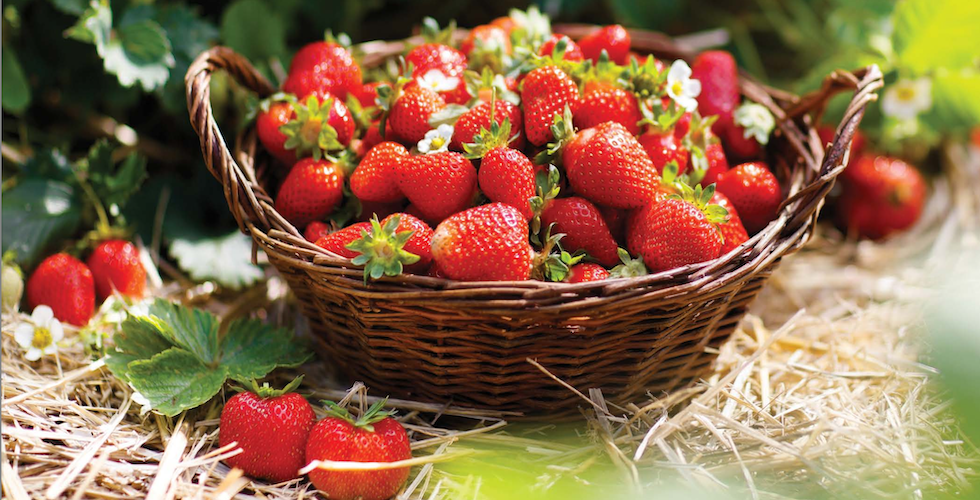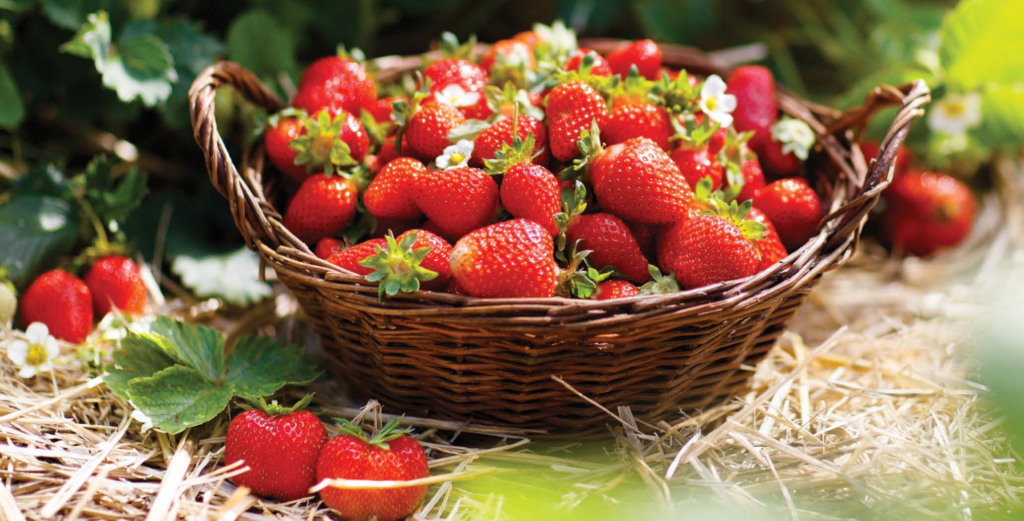
How to Grow Strawberries
Corrine Kozlak, author of Strawberries: 50 Tried & True Recipes, shares with us her recommendations on how to grow strawberries.
Strawberries are one of the most popular fruit plants. They’re fairly easy to grow and are prolific under the right conditions.
There are three general kinds of strawberry plants: June-bearing, everbearing, and day-neutral. June-bearing plants produce a lot of berries in June, as their name suggests. Everbearing crops produce two crops (one in early summer, one toward the end of summer). Day-neutral plants are a bit different, as they produce fruit as long as it’s warm enough for the plants to survive. Within these groups, there are many different varieties to choose from, so check with your local garden club or horticultural society experts for the best plants for your area.

Buy small plants or plugs, and plant them early in the spring. It is also recommended that you pinch back the initial flowers until the plant is established. Strawberries need nutrient-rich, well-drained soil; nitrogen-rich fertilizer; and sun. When planting bare-root plants, remove packaging, and then trim roots to around 6–8 inches, as needed. Then soak the roots in water for 10–15 minutes and plant the crowns at soil level. Water well and mulch with clean straw. Keep weeds and grass out of your strawberries. Strawberries are capable of self-pollination, but they also get pollination help from wind and, of course, insects.

Strawberries put out runners, which are long, vine-like shoots with little baby crowns and roots at the ends of the runners. If you keep them, you get more plants. Some people cut back the runners because they can reduce strawberry production and drain the mother plant.
Strawberries need a constant moist environment, but they don’t do well in standing water. At least 1 inch of water is needed weekly, whether through rain or watering. When the fruit is forming, more water is required. Mulching with straw protects against the heat and cold. Watering should continue through the summer, especially if it’s hot or dry. Late-season watering will affect the next year’s fruit.

Winterizing your strawberry plants depends on your climate and the hardiness of your particular strawberry plants. Most plants live for a few years. When it starts to get cold, cover them with…you guessed it…straw!
Strawberries: 50 Tried & True Recipes is part of the Adventure Publications Nature’s Favorite Foods cookbook series, which includes Rhubarb and Maple Syrup by Corrine Kozlak, as well as Tomatoes,Blueberries, Squash, Apples, Honey, and Eggs by Julia Rutland.


